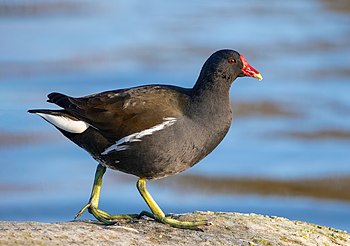User:Gerald Hogan
I welcome you to my user page. I've been a Wikipedian since June 2007.
Before you continue

To contact me, go to my talk page, or for private matters, email me.
Three recent changes
List of abbreviations (help):
- D
- Edit made at Wikidata
- r
- Edit flagged by ORES
- N
- New page
- m
- Minor edit
- b
- Bot edit
- (±123)
- Page byte size change
31 May 2024
- diffhist 2016 Connecticut Sun season 00:22 +798 Swimmer33 talk contribs (→Preseason: - filled)
- diffhist Hard Quiz 00:22 −1 202.7.251.57 talk (→Series 9 (2024))
- diffhist Sun Yang 00:22 −1,022 Jakeswimfan888 talk contribs (→2018 testing incident and 2020 ban: Unsourced. I subscribed to the paywalled paper, and it didn't say any of that. I can email snapshots of the entire article. If you cited the wrong source, correct it and verify on WP:WikiProject Resource Exchange. Also how do you know no lawsuit was filed? That source is 5 years old and doesn't mention any lawsuits.) Tags: Mobile edit Mobile web edit
My directory User:Harryboyles/Directory
Maintenance templates
Community portal tasks
You can help improve the articles listed below! This list updates frequently, so check back here for more tasks to try. (See Wikipedia:Maintenance or the Task Center for further information.)
Help counter systemic bias by creating new articles on important women.
Help improve popular pages, especially those of low quality.
Active Wiki Fixup Projects - - - Resources for maintenance and collaboration
|
"Wikipedia:Motto of the day/May 31, 2024"
Favourite mottos
The common moorhen (Gallinula chloropus) is a bird species in the rail family, Rallidae. It is distributed across many parts of the Old World, from Africa to Europe and Asia. It lives around well-vegetated marshes, ponds, canals and other wetlands. A midsized to large rail, the common moorhen ranges in length from 30 to 38 cm (12 to 15 in) in length and spans 50 to 62 cm (20 to 24 in) across the wings. It gives a wide range of gargling calls and will emit loud hisses when threatened. This common moorhen was photographed in the Parc des Chanteraines near Gennevilliers in the suburbs of Paris, France.
Photograph credit: Alexis LoursThe siege of Guînes took place from May to July 1352 when a French army under Geoffrey de Charny unsuccessfully attempted to recapture the French castle (pictured) at Guînes which had been seized by the English the previous January. The siege was part of the Hundred Years' War and took place during the uneasy and ill-kept truce of Calais. The strongly fortified castle had been taken by the English during a period of nominal truce and the English king, Edward III, decided to keep it. Charny led 4,500 men and retook the town but was unable to either recapture or blockade the castle. After two months of fierce fighting, a large English night attack on the French camp inflicted a heavy defeat and the French withdrew. Guînes was incorporated into the Pale of Calais. The threat posed by this enclave caused the French to garrison 60 fortified positions around it, at ruinous expense. The castle was besieged by the French in 1436 and 1514, but was relieved each time, before falling to the French in 1558. (Full article...)
Appendix













